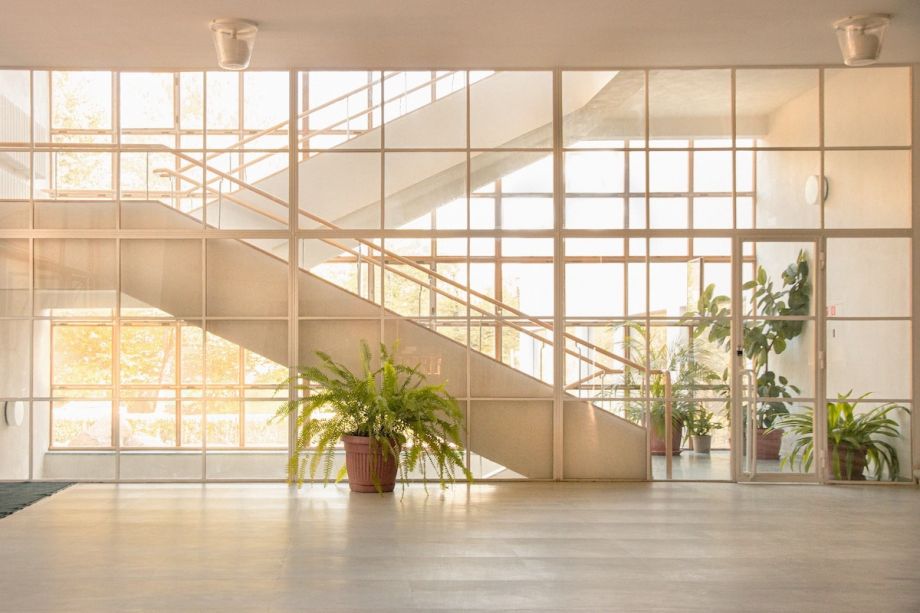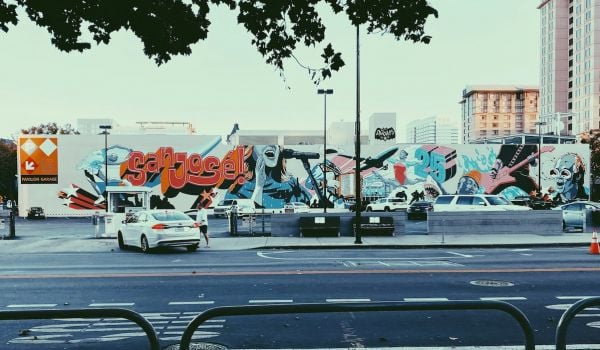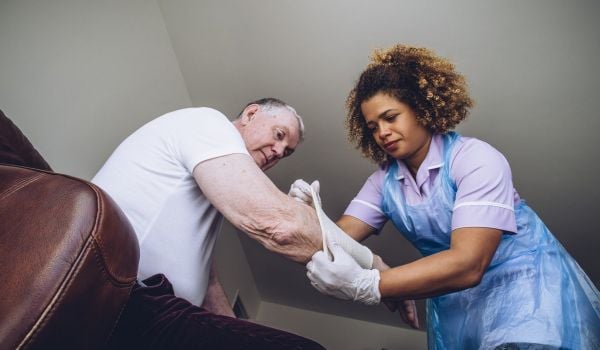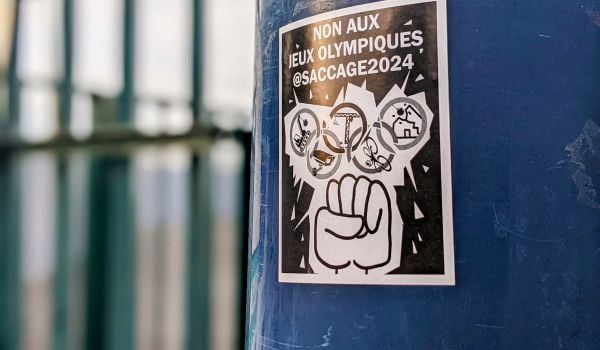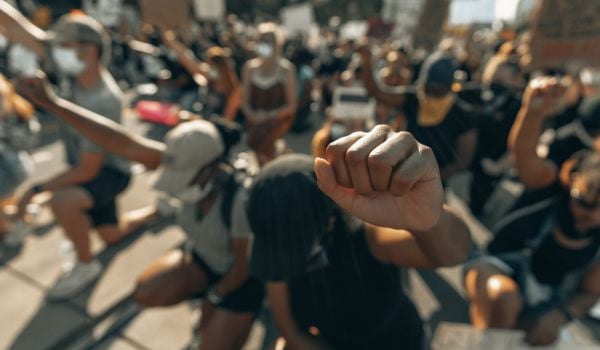In this excerpt from “Health Colonialism,” geographer Shiloh Krupar examines the role of urban brownfields in health disparities and medical apartheid.
In the early 1990s, big-city mayors and legislators from urban industrial states pressured Congress and the U.S. Environmental Protection Agency (EPA) to start a pilot program to redevelop underutilized and damaged land in highly desirable urban infill areas.
These brownfields, often cheaper than comparable nonpolluted properties, became sites of promise for reusing a struggling city’s vacant or depleted land — as a “green investment” to conserve unused land by redeveloping brownfields.
A form of brownfield project called healthfields reframes land revitalization as an ongoing public health effort involving community stewardship of bodies of land and human health. This land reuse policy seeks to remedy medical scarcity in underserved BIPOC communities and close the biomedical divide that separates bodily health and clinic-based acute care from environmental conditions.
Healthfields are brownfields ostensibly used for health purposes, such as health care centers, grocery stores, farmers markets, green spaces and in some cases affordable housing. The EPA’s website defines healthfields as an “economic development strategy that has served lower income families living in environmentally overburdened neighborhoods.”
The literature on healthfields emphasizes that brownfield law provides local governments and brownfield communities with the opportunity to link land revitalization with public health through provisions that allow local governments to spend up to 10% of their grants to conduct health monitoring of populations in sites where people may be exposed to hazardous substances and what is termed “legacy contamination.” Frequently cited healthfield projects range from asthma surveillance mapping of children linked to school-based health programs to the conversion of defunct gas stations into parks, farmers markets and health services centers.
The healthfield program debuted with the Willa Carson Health and Wellness Center in Clearwater, Florida. Opening in 2001, the center provides free health care predominantly to the surrounding African American community and is operated on donations and grants with the help of a volunteer workforce.
This case was driven by Willa Carson herself, who had already been operating a community health care center and wanted to raise enough money to open a more permanent facility for a free clinic to service residents of the city’s North Greenwood community. A derelict gas station was deemed an ideal place for the health center thanks to its central community location. Using EPA and state brownfield program funds, four underground storage tanks and 450 tons of contaminated soil were removed from the property. The city then leased the property to the nonprofit clinic — which Carson had previously operated out of two refurbished apartments — for 30 years at the rate of $1 per year.
Another brownfield conversion that fulfills critical needs and greatly improved medical access for local residents is the Johnnie Ruth Clarke Health Center at the historic Mercy Hospital in St. Petersburg, Florida.
Beset with petroleum contamination from a former cab company as well as hazardous waste from the African American hospital that operated on the grounds for over forty years, this healthfield project sought to install a new community-run health services center in the tradition of Jim Crow-era African American medical activism, providing residents with immediate access to health care and an economic anchor for further neighborhood redevelopment.
Funded with a $3.75 million U.S. Department of Health and Human Services grant and $463,000 U.S. Housing and Urban Development Community Development Block Grant funds, the center’s construction began in 2003 and included the preservation of the 1923 historic hospital building and a new museum dedicated to the history of African American medicine in Pinellas County.
The Johnnie Ruth Clarke Health Center foregrounds the potential of healthfields to convert legacies of health disparities tied to racial segregation into geographies of justice based on community-driven health services and land revitalization. The site is a brownfield partly because of the past lack of infrastructure for medical waste removal — what an EPA Brownfields conference presentation described as “abandoned historic African American Hospital environmental issues.”
The development of the health center at this Jim Crow-era hospital brings more community health services to an underserved area, but it does not significantly alter the spatialization of waste and racial inequity. The emphasis of brownfield programs, and by extension healthfields, on environmental cleanup standards and land futures allied to property productivity potentially means that significant but uncertain contamination remains.
In this sense, healthfields represent a contradiction: Such programs may offer badly needed health services, but they risk re-entrenching health disparities stemming from historic segregation, environmental racism and waste colonialism.
Healthfields may only superficially address the land’s hazards, thus ensuring exposure to contamination continues. This negative outcome of healthfields may be further intensified by the type of healthfield developed: The broad definition includes corporate packaged-food box stores, for-profit health service chains (often referred to as Medicaid mills) or pharmaceutical manufacturing, the latter being an especially well-known polluting industry. Healthfields may also support the growth of nonprofit philanthrocapitalist medical surveillance, as well as the installation of high-end hospital zones that exploit devalued land and the poor communities that live there while receiving tax breaks for their provision of humanitarian services.
Even as healthfields create an opportunity to bring health care to underserved areas and rear range historical geographies of hospital locations that arose along lines of segregation rather than epidemiological need, they also potentially serve as “Jim Crow tax shelters” that thrive on blight renewal.
While healthfields to some degree show that “land can be polluted and still foster good land relations,” as geographer Max Liboiron writes in “Pollution is Colonialism,” the continued prioritizing of property values and an environmentally inequitable and extractive logic incentivizes development projects that target vulnerable populations. It justifies ongoing land grabs under the banner of environmental health. Planting parks, farmers markets or other environmental amenities as trickle-down benefits to local health-stricken communities can intensify gentrification and entrench geographies of waste and race by “greenwashing” displacement.
Healthfield projects tether the reuse of brownfield sites to health purposes — namely local access to health care clinics — yet can function to greenwash austerity, poverty and contamination. In so doing, healthfields can perpetuate ill health. The initiative offers tax breaks and lowers cleanup standards and liability to health projects that remedy toxic blight: Even as healthfield programs create an opportunity for community-oriented land remedies, they also spur the growth of extractive development projects that exploit devalued land and do not necessarily give local communities a seat at the table of economic planning and governance.
The healthfields initiative aims to convert targeted areas into hospitals, wellness centers and grocery stores, offering tax breaks that invite “green health” projects. They promise an ad hoc postindustrial frontier that makes contaminated land available for cleanup and revitalization, and that can serve as an important means for generating liquidity in cash-strapped urban areas with small tax bases. The attendant discourse of blight claims that brownfield redevelopment enhances public health. But in practice, such redevelopment is structured to lower cleanup standards and reduce liability.
Brownfields and healthfields show how blight designation can be used to gentrify inner-city areas or arbitrarily secure more profitable site usage, and how health service installations may paradoxically entrench health inequities, economic injustices, and environmental hazards stemming from segregation and previous rounds of land seizure.
Excerpt adapted from Health Colonialism: Urban Wastelands and Hospital Frontiers by Shiloh Krupar. Published by the University of Minnesota Press, 2023. Health Colonialism is licensed under a Creative Commons Attribution-NonCommercial-NoDerivatives 4.0 International License (CC BY-NC-ND 4.0). Used by permission.

Shiloh Krupar is a geographer and Provost’s Distinguished Associate Professor in the Culture and Politics Program at Georgetown University. She is the author of “Hot Spotter’s Report: Military Fables of Toxic Waste” and coauthor of “Deadly Biocultures: The Ethics of Life-Making.” Krupar coedited “A People’s Atlas of Nuclear Colorado” and codirected the National Toxic Land/Labor Conservation Service.

